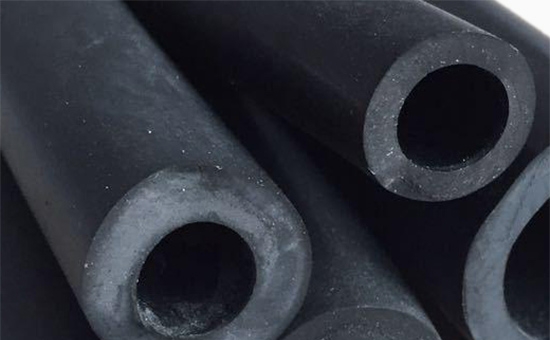
Adding an appropriate amount of butyl reclaimed rubber to the outer rubber of the air-conditioning hose with EPDM as the main raw material can further improve the performance and life of the air-conditioning hose. In actual production, when EPDM/butyl reclaimed rubber is used to prepare the outer layer of air conditioning hose rubber, the design of the vulcanization system directly affects the vulcanization performance, hot air aging performance, compression performance, and resilience of the rubber.
1. The effect of vulcanization system on the vulcanization performance of EPDM/butyl reclaimed rubber compound
When EPDM/butyl reclaimed rubber is used to prepare the outer layer of air-conditioning hoses, the vulcanization system generally uses the accelerator MB as the main accelerator, and selects sulfur, DCP, accelerator TT, accelerator CZ, etc. according to requirements. For the EPDM/butyl reclaimed rubber 2YLYY61 rubber compound, the vulcanizate with the sulfur-free vulcanization system has a longer positive vulcanization time, which is more beneficial to the processing of the hose, but the maximum torque is reduced; proper use can significantly improve the promotion of the vulcanization activity of the system The agent can further improve the vulcanization speed and crosslinking degree of EPDM/butyl reclaimed rubber vulcanizates.
2. The effect of vulcanization system on the hot air aging performance of EPDM/butyl reclaimed rubber hose
Polysulfide bonds are the main factor that affects the hot air aging performance of EPDM/butyl reclaimed rubber vulcanizates. When sulfur is used for vulcanization, a large number of polysulfide bonds will be formed. Therefore, peroxide vulcanization is recommended. When using DCP vulcanization, a small amount of TAIC (TAIC, triallyl isocyanurate, is a crosslinking aid for peroxide crosslinking or free radical reaction crosslinking) is added to the vulcanization system to prevent peroxide free radicals from causing The main chain is broken to further improve the aging resistance of EPDM/butyl reclaimed rubber vulcanizates.
3. The effect of vulcanization system on the compression deformation of EPDM/butyl reclaimed rubber hose
When the EPDM/butyl reclaimed rubber is vulcanized with DCP, the CC cross-linked bond formed is large, which is beneficial to reduce the compression set of the rubber; the polysulfide bond formed after the sulfur-containing vulcanization system is vulcanized, and the thermal stability of the polysulfide bond is poor and the rubber is compressed Permanent deformation is large. Therefore, when reducing the compression set of EPDM/butyl reclaimed rubber hose, it is recommended to use a sulfur-free vulcanization system, and appropriately reduce the amount of accelerator and crosslinking aid.
In actual production, the amount of the auxiliary crosslinking agent TAIC should be controlled below 2.5 parts. Too much amount will act as a plasticizer, resulting in increased compression deformation of the EPDM/butyl reclaimed rubber hose. When designing the EPDM/butyl reclaimed rubber hose vulcanization system, you also need to consider the impact of the vulcanization system on the tensile strength, elongation at break, and resilience of the rubber hose. The editor will have the opportunity to continue discussing related issues with you later.
Exclusive original article [commercial authorization] reprint, excerpt and excerpt in any form are prohibited without written authorization. Focus on Hongyun rubber: learn the process formula and raw material technology of producing rubber products from recycled rubber to help you reduce costs and increase profits